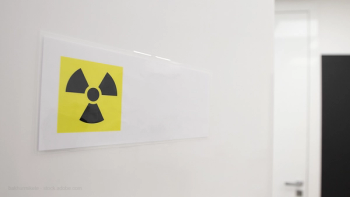
- MHE October 2022
- Volume 32
- Issue 10
Up, Up and Not Going Away: Cancer Drug Prices
Escalating costs are hitting patients hard. CMS price negotiation and the $2,000 cap on Part D out-of-pocket expenses should benefit many patients with Medicare coverage.
Oncology drugs are making up a bigger and bigger part of the money spent on cancer care. The cost of cancer drugs now represents between 50% and 60% of the total cancer spend and continues to climb. Prices for new drugs approved for the treatment of cancer more than doubled between 2009 to 2019, from an average monthly cost of $6,000 to nearly $15,000.
Andrew Hertler, M.D., chief medical officer at New Century Health, a specialty care management company, notes that most of these new, high-priced therapies do not cure cancer — and, on average, have a limited effect on survival. According to Hertler, 71 consecutive FDA approvals of drugs to treat solid tumors increased survival an average of just 2.1 months, and 70% of the drugs approved over the past two decades had no effect on improving overall survival.
Financial toxicity
The high price tags result in “financial toxicity” for patients — prices so high that they affect the well-being of patients, including (but not limited to) treatment itself becoming less effective because patients skip or cut doses or don’t take the medication to begin with. Medicare beneficiaries without Medicare supplemental insurance or coverage from a Medicare Advantage plan can easily have out-of-pocket expenses of $50,000 or more per year because of coinsurance in Part B and the lack of a cap on out-of-pocket expenses in Part D. The Inflation Reduction Act of 2022 will, though, put a cap of $2,000 on Part D out-of-pocket expenses starting in 2025.
Pharmaceutical companies have coupon programs that make their drugs more affordable for patients, but Medicare patients are not eligible for them because of anti-kickback statutes and concern that these programs would steer patients toward more expensive drugs.
Private foundation money can help but it often dries up within the first half of a year of treatment, says Hertler. Even when people have ostensibly good private insurance, maximum out-of-pocket costs can reach $10,000 per year, which is significant for many families. “For the first time in my 40-year career, I hear of patients refusing even curative therapies out of fear of jeopardizing their families’ savings and retirement. The ethical question arises: Should a family have to conduct a bake sale to cover life-sustaining therapy?” says Hertler.
John Vatkevich, clinical trial site manager at the patient empowerment platform Outcomes4Me, which has developed a cancer care navigation app, notes that financial anxiety is a huge burden on patients who are already under immense stress.
“Patients generally already keep a medical log to keep track of their care. They shouldn’t also have to carry an insurance binder with them to track their medical and treatment expenses. It’s overwhelming,” he says. During his eight years in the clinical setting, the questions he most often received from cancer patients were related to money and drug costs: “Who will pay for this?” and “What are my co-pays?”
“Patients often don’t receive their ideal care options because insurance won’t cover the cost of the drug or drugs that could lead to the best health outcomes,” Vatkevich says. “Oncology, on the whole, is personalized medicine. Even chemo is personalized to a patient’s unique stage and disease pathology. Unfortunately, even though genetic testing has allowed for personalized treatments at scale, insurance companies haven’t caught up.”
All of these cost and coverage issues are weighing on patients at a time when researchers and oncologists see cancer treatment pivoting away from cytotoxic chemotherapy to immunotherapies that harness the immune system and targeted therapies that home in on cancer cells, Hertler says.
“These two classes of drugs have significantly extended the survival of patients with advanced cancer from months to years and are impacting virtually all tumor types,” Hertler says. “Current efforts are aimed at using these types of drugs to treat earlier-stage cancers, which are still potentially curable, to increase the overall cure rate.”
Pharmaceutical companies routinely cite the high cost of research and drug development to justify high prices. However, 85% of basic cancer research is funded through taxpayers’ money, according to the American Association for Cancer Research.
Roughly half of cancer drug purchases are made for Medicare patients. The Inflation Reduction Act will empower the federal government to negotiate drug prices for the first time, starting with 10 drugs in 2026. But the legislation sets a number of limits on the eligible for negotiation. For example, drugs with generics or biosimilars are ineligible, as are small-molecule drugs that were approved by the FDA less than nine years ago and biologics, less than 13 years.
One important overall factor pushing up oncology drug prices is that many new therapies target relatively small numbers of patients, especially initially, before new indications are added. To recoup the fixed research and development costs associated with bringing a new drug to market — not to mention financing all of the failed attempts — the price per patient has to increase.
“In many cases, given the heterogeneity of cancers with different sets of causes, we are dealing with niche therapies with few competitors,” Hertler says. “Unfortunately, free market forces do not function effectively for purchasing health care products and services which involve sickness, suffering and death.”
Furthermore, he explains, the situation is often a “double jeopardy” for patients fortunate enough to have health insurance. The patient is not footing most of the bill, and the provider knows this.
“In the setting of life-sustaining treatment, cost is no longer a major concern for many patients,” Hertler says.
“Cost-benefit analyses reveal no correlation between price and benefits when measured by objective criteria such as survival or quality of life,” he continues. “One drug may prolong life by days and another by years, and yet they will likely carry very similar price tags.”
Coverage concerns
In Medicare, drugs to treat cancer are in one of six “protected classes.” Part D plans, including those that are folded into Medicare Advantage plans, must cover every drug available in those protected classes. However, Part D plans can use step therapy and other managed care tactics to control drug costs and utilization.
Medicaid and commercial insurance have a bit more control over their formularies and often have “preferred drugs” with restricted access to those alternatives that may have no proven increase in efficacy or decrease in toxicity, according to Hertler.
Many of the new cancer drugs reaching market today are approved through a process known as accelerated approval, where drugs are approved when there is an urgent need for them, but typically before definitive evidence is available to demonstrate that they prolong patients’ lives or improve their quality of life.
“Accelerated approvals are usually based upon surrogate end points, which suggest there will be an improvement in survival, such as response rate (tumor shrinkage, calculated in various ways) or progression-free survival (the time before a tumor increases in size or patient dies),” Hertler says. “Unfortunately, these surrogate end points translate into an increase in overall survival less than half of the time. Therefore, in exchange for the accelerated approval, the drugmaker is required to complete definitive follow-up studies to prove the drug really works.”
Many of these studies are never done. Only 16% of the 93 accelerated approvals between 1992 and 2017 ultimately had confirmed clinical benefit, and 40% did not complete confirmatory trials at all, according to research findings reported in JAMA Internal Medicine several years ago by Aaron S. Kesselheim, M.D., J.D., M.P.H., a Harvard drug pricing expert, and his colleagues.
“The prices of drugs that receive accelerated approval are set similar to those drugs that receive regular approvals, meaning that payers are covering some therapies without proven impact on overall survival,” says Hertler, who pointed to findings from another JAMA Internal Medicine study, this one published in 2021, which calculated that $569 million had been spent by Medicare Parts B and D between 2017 and 2019 on 10 cancer drug indications with confirmed lack of overall survival benefit.
And these days, just because an insurer has a drug on its formulary doesn’t mean out-of-pocket costs for patients are affordable, notes Ian Manners, MBA, chief strategy officer and head of life sciences at TailorMed, a drug software company. He cited a study published in the Journal of the National Cancer Institute this year that followed 380 patients with advanced colorectal cancer. All but seven had health insurance. After just one year, almost three-quarters of the patients encountered financial hardships even though they had coverage for treatment, and one-quarter indicated that they experienced financial hardships within three months of diagnosis.
Michael Donlin, co-founder of StatsFind, has more than 25 years of experience in oncology care, including administration, financial and patient care. He notes the first challenge of coverage is when the oncology medication is denied. Then the process begins for the provider to navigate the appeals process and provide the necessary documentation. If the appeal is granted, the next challenge is the patient’s ability to pay the deductible and coinsurance. “We recently had a Medicare patient who unfortunately had not signed up for a Part D plan need Tarceva (erlotinib),” he says. “He was quoted $1,958 for 30 days of medication. His income exceeded any of the limits for financial assistance programs; therefore, his only option was to use his retirement savings to cover the costs until January 2023, when he would be eligible for Part D coverage.”
Finding solutions
In Hertler’s opinion, the problem of high cancer drug prices will be helped by the new power that the Inflation Reduction Act gave to CMS to negotiate Medicare prices, which will go into effect in 2026 with 10 Part D drugs and extend in 2028 to Part B drugs. Also on Hertler’s list: cancer treatment pathways that incorporate cost-benefit analyses into drug decision-making, allowing the importation of drugs for personal use and eliminating drug rebates.
Donlin believes a rise of local nonprofit pharmacies should be monitored as an interesting option for the underinsured. In addition, new websites, such as Mark Cuban’s CostPlusDrugs.com, may make some cancer drugs less expensive for patients. Along with coupon-type arrangements, the number of programs that extend some coverage to the uninsured is expanding out of necessity, he says.
Research has shown that financial navigation services are one of the best ways to address financial toxicity in a hands-on way.
Manners of TailorMed says emerging technologies can help to automate the financial navigation process by uncovering cost savings for patients and streamlining the process of enrolling in resources. “It’s unlikely that any single-policy solution will holistically address the affordability problem,” he adds. “It’s going to take a mix of structural and pragmatic interventions to make meaningful progress.”
Keith Loria is a freelance writer in the Washington, D.C., area.
Articles in this issue
about 3 years ago
Healthcare’s Journey into the Metaverseabout 3 years ago
Drugs and Older Age: An Increasingly Deadly Combinationabout 3 years ago
Taking Long COVID-19 to Heartabout 3 years ago
Primary Care in Critical Conditionabout 3 years ago
Drugs on the Fast Track as Treatments for PTSDNewsletter
Get the latest industry news, event updates, and more from Managed healthcare Executive.





















































